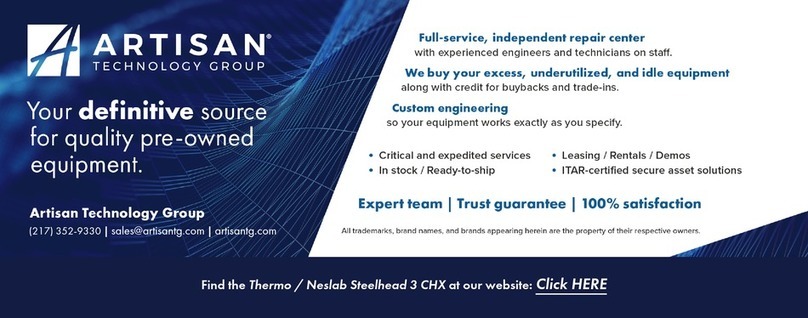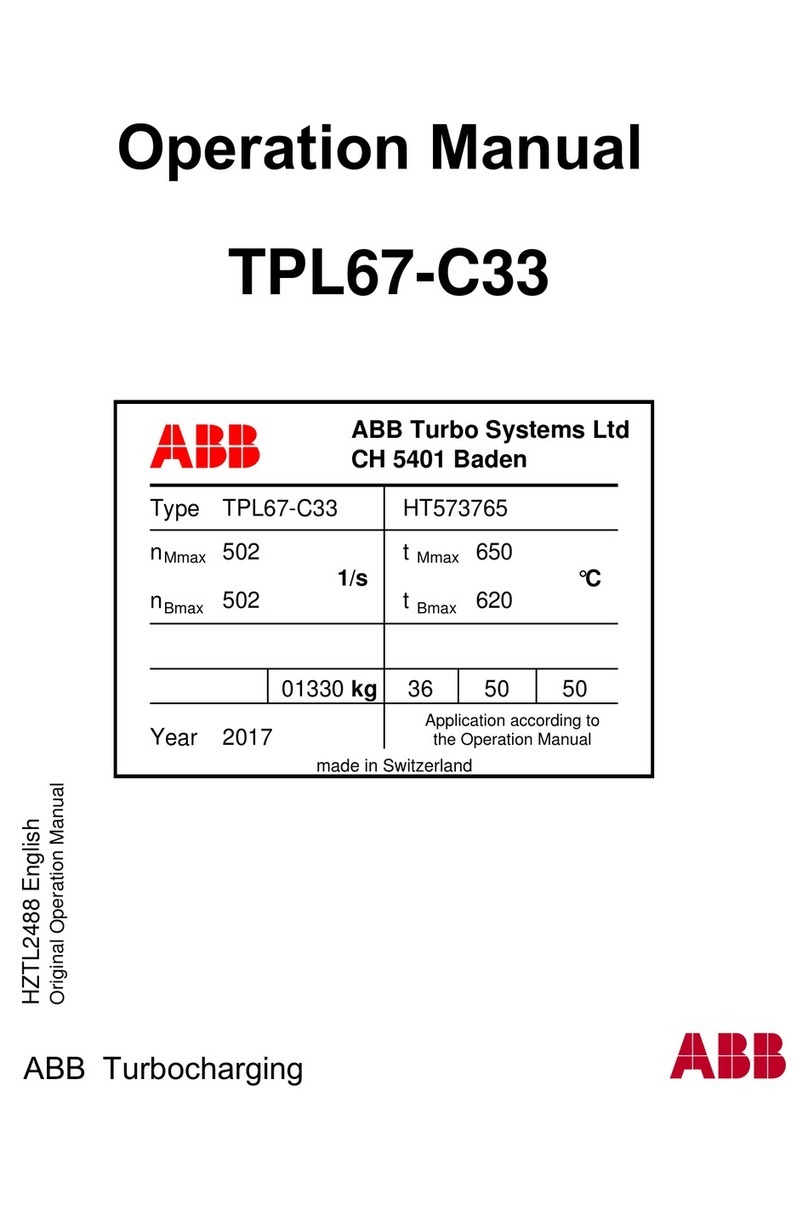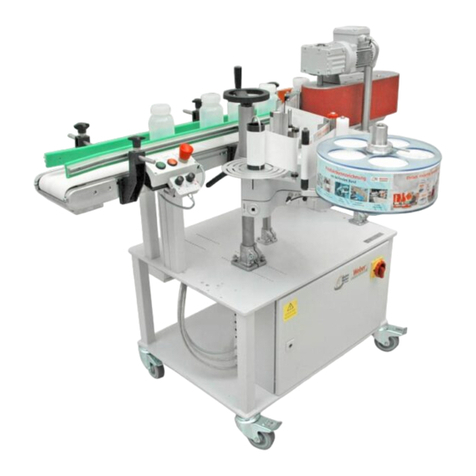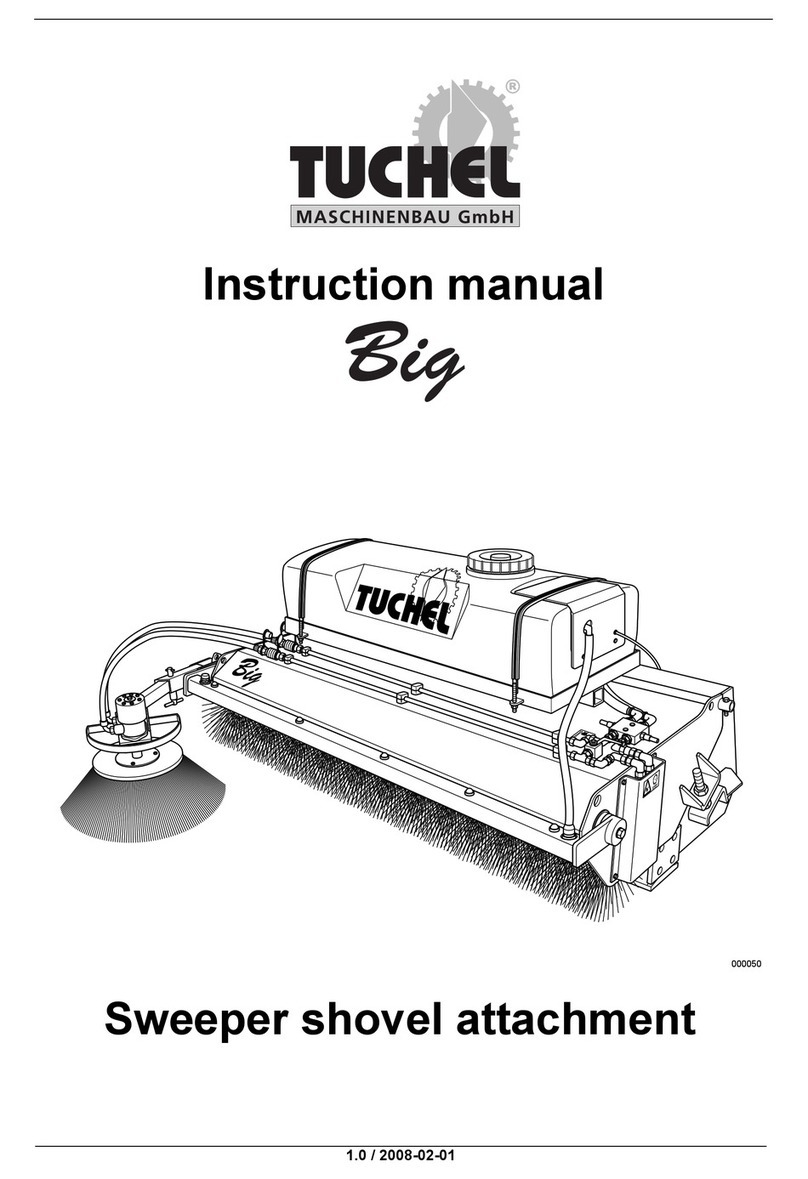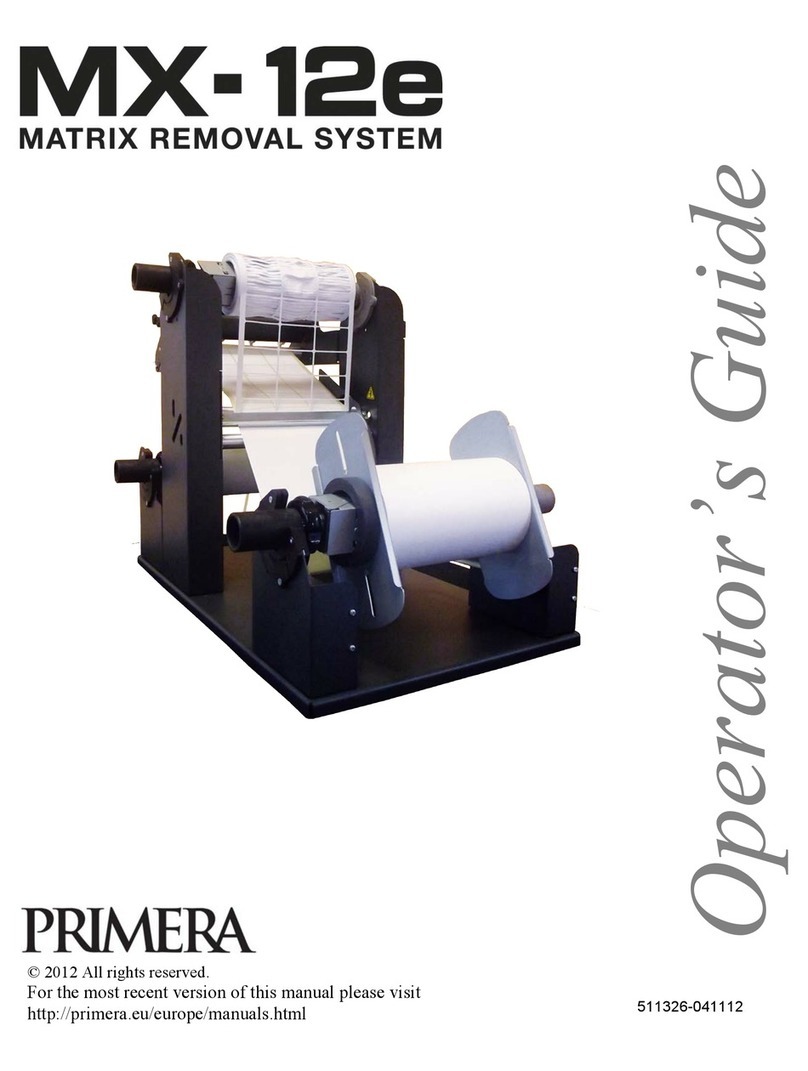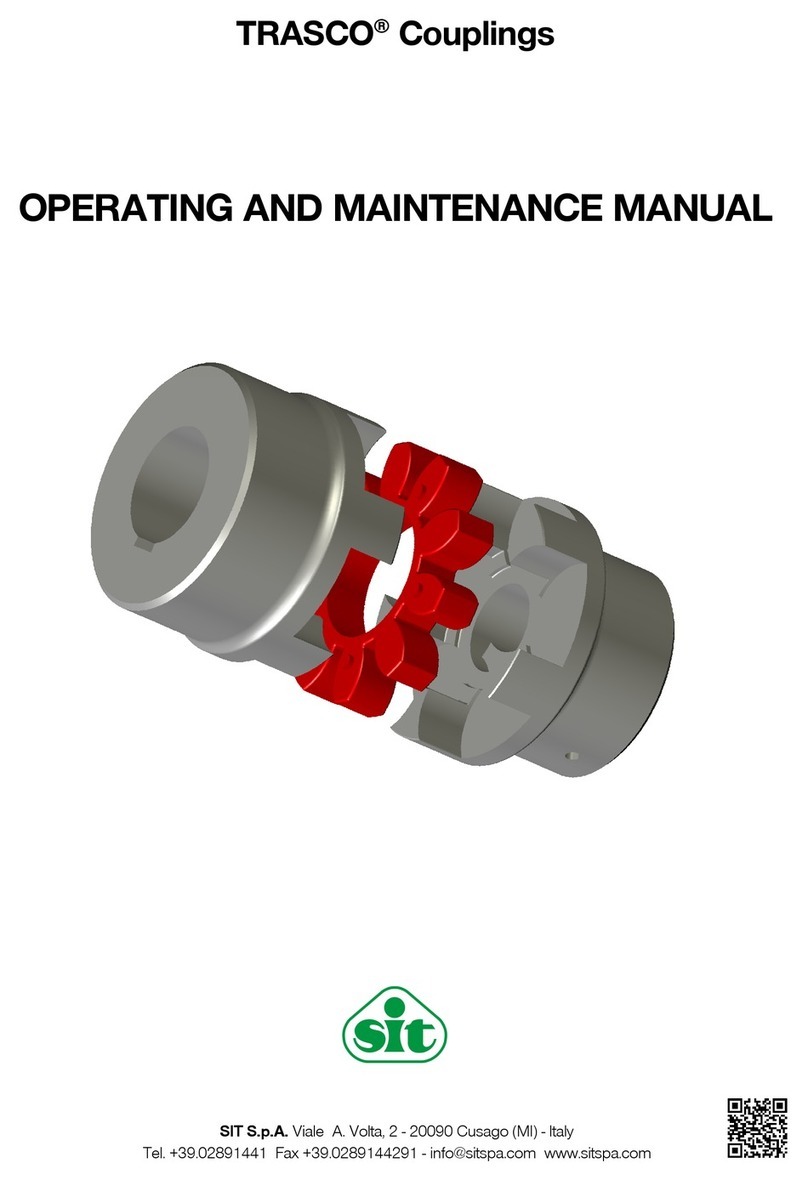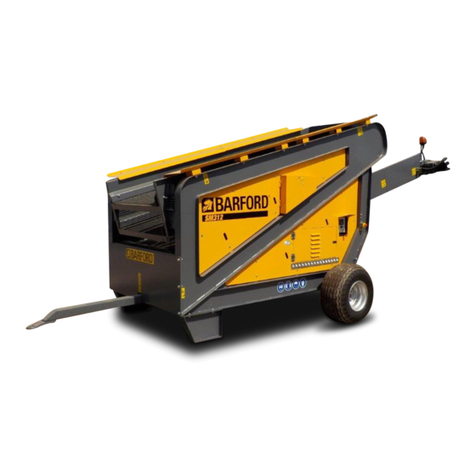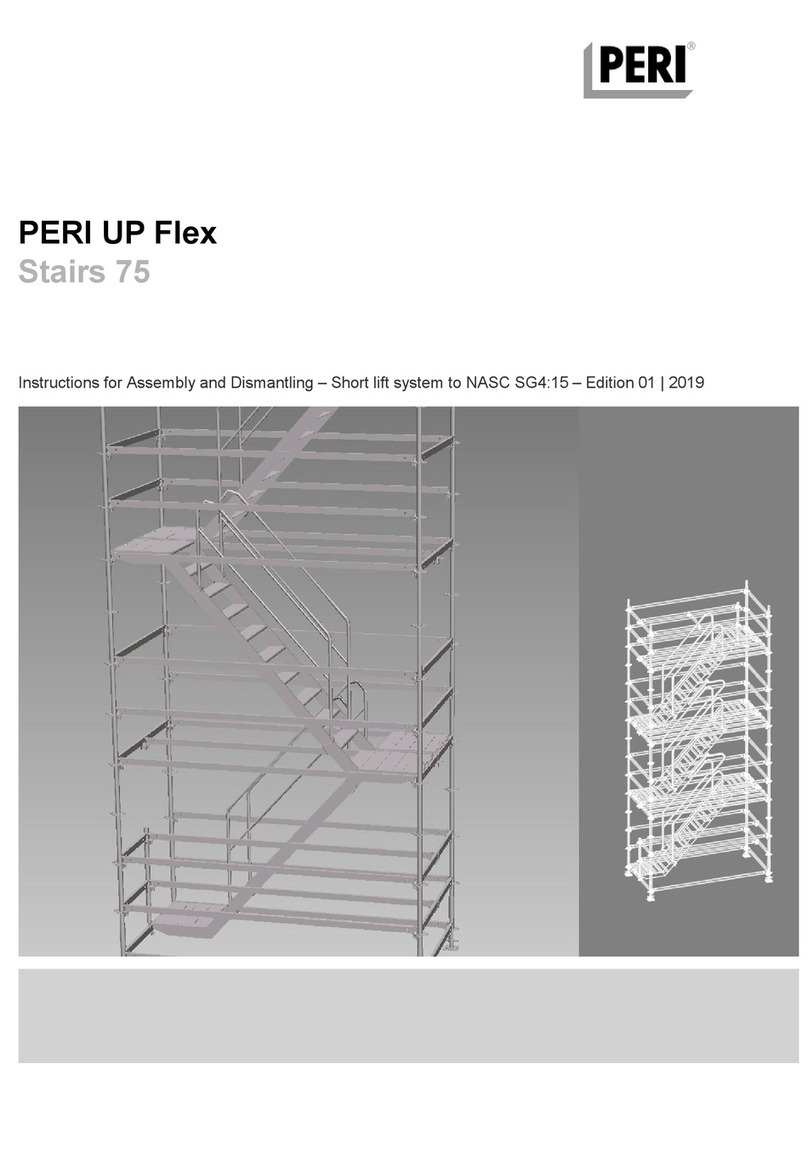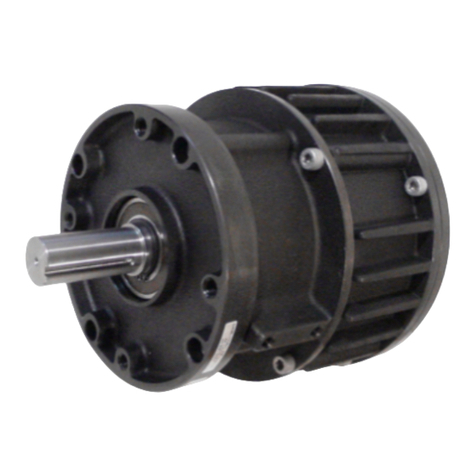Neslab System I Liquid to Liquid Manual

Instruction and Operation Manual
NESLAB Manual P/N 013564
Rev. 06/05/97
System I Liquid to Liquid
Heat Exchanger
NESLAB online
Product Service Information, Electronic Catalog,
Applications Notes, MSDS Forms, e-mail.
(603)427-2490
Set modem to 8-N-1 protocol, 1200 - 14400 baud
Voice Info: (800) 4-NESLAB
Comments on this manual can be sent to:
or visit our Web page at:
http://www.neslabinc.com

- 1 -
System I Liquid to Liquid Heat Exchanger
Table of Contents
PREFACE Compliance ............................................................................................ 2
Unpacking.............................................................................................. 2
Warranty ................................................................................................ 2
After-sale Support .................................................................................. 2
SECTION I
Safety Warnings................................................................................................ 3
SECTION II
General Information Description ............................................................................................. 4
Specifications......................................................................................... 4
SECTION III
Installation Site......................................................................................................... 5
Facility Water Requirements .................................................................. 5
Electrical Requirements ......................................................................... 5
Plumbing Requirements......................................................................... 6
Fluids ..................................................................................................... 6
Water Quality Standards and Recommendations .................................. 7
Filling Requirements .............................................................................. 9
Pump Purging ........................................................................................ 9
SECTION IV
Operation Start Up.................................................................................................. 10
Temperature Adjustment ....................................................................... 10
SECTION V
Special Features Low Level Fluid Monitor ......................................................................... 11
High Temperature Monitor ..................................................................... 11
EXTERNAL INTERLOCK Contacts........................................................ 11
SECTION VI
Maintenance and
Service Service Contracts................................................................................... 12
Cleaning................................................................................................. 12
Algae...................................................................................................... 12
Pump Strainer ........................................................................................ 12
Pressure Relief Valve Adjustment.......................................................... 13
Pump Lubrication ................................................................................... 14
SECTION VII
Troubleshooting Checklist ................................................................................................ 15
Service Assistan .................................................................................... 16
Technical Support .................................................................................. 16
SECTION VIII
Diagrams Flow Diagram......................................................................................... 17
SECTION IX
Warranty ............................................................................................................... 18

- 2 -
Preface
Compliance Products tested and found to be in compliance with the requirements defined
in the EMC standards defined by 89/336/EEC as well as Low Voltage Direc-
tive (LVD) 73/23/EEC can be identified by the CE label on the rear of the unit.
The testing has demonstrated compliance with the following directives:
LVD, 73/23/EEC Complies with UL 3101-1:93
EMC, 89/336/EEC EN 55011, Class A Verification
EN50082-1:1992
IEC1000-4-2:1995
IEC1000-4-3:1994
IEC1000-4-4:1995
For any additional information refer to the Letter of Compliance that shipped
with the unit (Declaration of Conformity).
Unpacking Retain all cartons and packing material until the unit is operated and found to
be in good condition. If the unit shows external or internal damage, or does
not operate properly, contact the transportation company and file a damage
claim. Under ICC regulations, this is your responsibility.
Warranty Units have a one year warranty against defective parts and workmanship
from date of shipment. See back page for more details.
After-sale Support NESLAB is committed to customer service both during and after the sale. If
you have questions concerning the operation of your unit, contact our Sales
Department. If your unit fails to operate properly, or if you have questions
concerning spare parts or Service Contracts, please contact our Service
Department for assistance.

- 3 -
Section I Safety
Warnings Make sure you read and understand all instructions and safety precautions
listed in this manual before installing or operating your unit. If you have any
questions concerning the operation of your unit or the information in this
manual, contact our Sales Department (see After-sale Support).
Observe all warning labels.
Never remove warning labels.
Never operate damaged or leaking equipment.
Never operate the unit without cooling fluid in the reservoir.
Always turn off the unit and disconnect the line cord from the power
source before performing any service or maintenance procedures.
Always empty the reservoir before moving the unit.
Always turn off the unit and disconnect the line cord from the power
source before moving the unit.
Never operate equipment with damaged line cords.
In addition to the safety warnings listed above, warnings are posted through
out the manual. These warnings are designated by an exclamation mark
inside an equilateral triangle with text highlighted in bold. Read and follow
these important instructions. Failure to observe these instructions can result
in permanent damage to the unit, significant property damage, or personal
injury or death.

- 4 -
Section II General Information
Description The System I Liquid to Liquid Heat Exchanger uses building recirculating or
tap water as the secondary cooling medium to remove heat from the cooling
fluid in the closed recirculation loop.
The unit consists of a heat exchanger, recirculation pump, PVC reservoir,
and an analog temperature controller.
Specifications
Temperature Range
Temperature Stability1
Cooling Capacity1,2
+5°C to +35°C
±1.0°C
18
16
14
12
10
8
6
4
2
2 3 4 5 6 7 Flow Rate (gpm)
3.5 7.5 12.5 18.0 25.0 33.0 Pressure (psi)
Reservoir Volume
Gallons
Liters
Unit Dimensions
(H x W x D)
Inches
Centimeters
1.0
3.8
25½ x 14¼ x 20½
64.7 x 36.2 x 52.1
1. Specifications listed are for a standard unit, operating at +20°C fluid temperature, with
tap water as the cooling fluid.
2. Cooling capacity is based on a 10°C difference between the temperature of the cooling
water supply (house water) and the cooling fluid as it leaves the System I (see Section
III, Facility Water Requirements).

- 5 -
Section III Installation
Site The unit should be placed in a location with easy access to a cooling water
source and a drain. Never place the unit in a location where excessive heat,
moisture, or corrosive materials are present.
Facility Water
Requirements
Limit the facility water inlet pressure to approximately 65 psig.
Refer to the Cooling Capacity chart in Section II, Specifications. The flow rate
of the cooling water supply must meet or exceed these requirements for the
unit to operate at its full rated capacity. If the cooling water does not meet
these standards, the cooling capacity will derate. The chart is based on a
10°C difference between the temperature of the cooling water supply (facility
water) and the cooling fluid as it leaves the System I.
As the heat load increases, the required flow rate of the cooling water supply
increases. For example, if the heat load is 8 kilowatts, only 3.25 gallons per
minute at 8.5 psi is required to remove the heat. However, if the heat load
is 14 kilowatts, about 5.5 gallons per minute at 21.5 psi is required.
Electrical
Requirements Refer to the serial number on the rear of the unit for the specific electrical
requirements of your unit.
Ensure the voltage of the power source meets the specified voltage, ±10%.
Make sure an adequate ground connection is provided.

- 6 -
Plumbing
Requirements Before installing the unit to an instrument that previously used tap water as a
cooling fluid, flush the instrument several times to remove any rust or scale
that has built up. The manufacturer of the instrument should be able to
recommend a cleaning fluid for their equipment.
The plumbing connections are located on the rear of the unit and are
labelled COOLING WATER and RECIRCULATING WATER. The top fittings
are inlets and the bottom fittings are outlets. The COOLING WATER
connections are ¾ inch FPT. The RECIRCULATING WATER connections
are ½ inch MPT.
Connect the COOLING WATER connections to the cooling water supply.
Connect the RECIRCULATING WATER connections to the instrument being
cooled.
Flexible tubing, if used, should be of heavy wall or reinforced construction.
All tubing should be rated to withstand 80 psi at +35°C. Make sure all tubing
connections are securely clamped. Avoid running tubing near radiators, hot
water pipes, etc. If substantial lengths of tubing are necessary, insulation
may be required to prevent loss of cooling capacity.
Tubing and insulation are available from NESLAB. Contact our Sales Depart-
ment for more information (see Preface, After-sale Support).
It is important to keep the distance between the unit and the instrument being
cooled as short as possible, and to use the largest diameter tubing practical.
Tubing should be straight and without bends. If diameter reductions must be
made, they should be made at the inlet and outlet of the instrument being
cooled, not at the unit.
If substantial lengths of cooling lines are required, they should be pre-filled
with cooling fluid before connecting them to the unit.
Fluids Refer to the Water Quality and Recommendations section.
The selected fluid must have a viscosity of 50 centistokes or less at the
lowest operating temperature.
Tap water is the recommended fluid for operation.
Never use flammable or corrosive fluids with this unit.

- 7 -
Water Quality Standards
and Recommendations Permissible(PPM) Desirable(PPM)
Microbiologicals
(algae,bacteria,fungi) 0 0
Inorganic Chemicals
Calcium <40 0.6
Chloride 250 <25
Copper 1.3 1.0
Iron 0.3 <0.1
Lead 0.015 0
Magnesium <12 0.1
Manganese 0.05 <0.03
Nitrates\Nitrites 10 as N 0
Potassium <20 0.3
Silicate 25 <1.0
Sodium <20 0.3
Sulfate 250 <50
Hardness 17 <0.05
Total Dissolved Solids 50 10
Other Parameters
pH 6.5-8.5 7-8
Resistivity 0.01* 0.05-0.1*
* Megohm-Cm (Compensated at 25C)
Unfavorably high total ionized solids (TIS) can accelerate the rate of galvanic
corrosion. These contaminants can function as electrolytes which increase
the potential for galvanic cell corrosion and lead to localized corrosion such
as pitting which can be observed at the studs and on the outside surface of
cooling coils. Eventually, the pitting will become so extensive that the coil will
leak refrigerant into the water reservoir.
As an example, raw water in the United States averages 171 ppm (as NaCl).
The recommended level for use in a water system is between 0.5 to 5.0 ppm
(as NaCl).
Recommendation: Initially fill the tank with distilled/deionized water. Do not
use untreated tap water as the total ionized solids level may be too high.

- 8 -
Maintain this water quality at a resistivity of between 1 to 10 megohm-cm
(compensated at 25°C) by using a purification system. Although the initial fill
may be as high as 10 megohm-cm (compensated at 25°C), the desired level
for long time usage is 1 to 3 megohm-cm (compensated at 25°C).
The above two recommendations will reduce the electrolytic potential of the
water and prevent or reduce the galvanic corrosion observed.
Resistivity (megohm-cm @ 25°C)
Not Recommended, Increasingly Corrosive
Operations with Stainless Steel Systems
Operations with
Mixed Metals
Copper/Brass/
Stainless Steel CONSULT MATERIALS ENGINEER
10 20 30 40 50 60 70 80
18.30
15.00
10.00
3.00
1.00
0.10
0.05
Water Quality Considerations
Temperature °C

- 9 -
Filling
Requirements The reservoir access cover is located on top of the unit. Remove the reservoir
access cover and locate the reservoir plug (square nut). Remove the plug
and fill the reservoir to the bottom of the fill hole flange. Keep extra cooling
fluid on hand until the entire system (the System I, the instrument being
cooled and the tubing that connects them) is filled.
Do not replace the reservoir plug until the unit is circulating fluid through the
instrument being cooled (see Section IV, Start Up).
Pump Purging Units with TU-1 pumps may require pump purging. Refer to the identification
label on the rear of the unit to identify the specific pump.
Pump purging is necessary to purge air trapped in the pump head cavity.
When the unit is started, if there is no flow in the RECIRCULATING
SUPPLY tube, or if the flow is restricted (see Section II, Pumps to review the
pump flow and pressure specifications), purging is necessary.
Place a container under the SUPPLY connection. Start the unit. Loosen
the hose clamp on the SUPPLY connection and partially remove the hose
from the connection. Do not completely remove the hose from the
SUPPLY connection. Allow the air to escape. After a few moments,
cooling fluid should flow from the connection.
If fluid does not flow on its own accord, attach a short piece of tubing to the
connection and apply suction to start flow.
Once flow is established, reconnect the tubing on the SUPPLY connection.
The pump is now purged and the unit is ready for operation.

- 10 -
Section IV Operation
Start Up Before starting the unit, check all electrical and plumbing connections and
make sure the circulating system has been properly filled with cooling fluid.
To start the unit, place the POWER ON/OFF switch in the ON position and
momentarily press and hold the PUSH TO START button. The recirculation
pump will start.
If the unit does not continue to run when the PUSH TO START button is
released, check the fluid level in the reservoir. The float switch in the reservoir
prevents the unit from operating if the fluid level in the reservoir is below the
operating level. If the fluid level is low, “top off” the reservoir and restart the unit.
Once the System I continues to circulate cooling fluid through the instrument
being cooled, replace the reservoir plug. Tighten the plug “hand tight”;
excessive pressure can damage the PVC reservoir.
Temperature
Adjustment A control valve, located in the COOLING WATER INLET line, regulates the
flow rate of the cooling water supply as it enters the unit. The valve regulates
the flow rate based on the heat load. Flow through the unit is discontinued
when the unit is shut off.
To adjust the temperature of the cooling fluid, turn the calibrated
TEMPERATURE dial and position the desired temperature as close as
possible to the reference line.
The RECIRCULATING TEMPERATURE gauge on the front of the unit
indicates the temperature of the fluid in the reservoir.
The temperature controller opens and closes the control valve in the COOL-
ING WATER INLET to maintain the desired temperature. The green and
amber lights on the control panel indicate the status of the valve. When the
green light is on, the valve is open and heat is being removed from the
cooling fluid. When the amber light in on, no cooling is occurring.
When selecting an operating temperature, remember that the lowest achiev-
able temperature is a function of the available flow rate, the temperature of
the cooling water supply and the heat load.
When tap water is used as a cooling water source, a slight “bucking” may occur as
the valve opens and closes. The amount of “bucking” depends on the pressure
differential between the COOLING WATER INLET and the COOLING WATER
OUTLET/DRAIN. By lowering the pressure differential to 12 psi, the amount of
“bucking” can be minimized. The “bucking” is not harmful to the System I.

- 11 -
Section V Special Features
Low Fluid
Level Monitor The low fluid level monitor is connected to a float switch in the reservoir. A
low fluid level fault occurs when the cooling fluid in the reservoir drops below
the operating level.
In the event of a low fluid level fault, the unit will shut down, the red HIGH
TEMP/LOW LEVEL lamp will light, and the EXTERNAL INTERLOCK
contacts will open. The cause of the fault must be identified and corrected
before the unit can be restarted.
High Temperature
Monitor The high temperature monitor (HTC) is connected to a sensor that monitors
the cooling fluid temperature as it exits the heat exchanger. The monitor
protects the system from exposure to excessively hot cooling fluid. A tem-
perature fault occurs when the cooling fluid temperature exceeds the set
temperature limit.
In the event of a high temperature fault, the unit will shut down, the red
HIGH TEMP/LOW LEVEL lamp will light, and the EXTERNAL INTERLOCK
contacts will open. The cause of the fault must be identified and corrected
before the unit can be restarted.
The monitor is not preset and must be adjusted during initial installation.
The monitor is located on the rear of the unit.
A slotted adjustment screw is located in the center of the monitor. A tempera-
ture range scale is located next to the adjustment screw. The temperature
scale is in °F.
To adjust the monitor, turn the adjustment screw until the pointer on the
temperature scale corresponds to the desired limit. A temperature limit ~50°F
higher than the operating temperature is recommended.
EXTERNAL
INTERLOCK Contacts A set of relay contacts is connected to a receptacle on the front pare labelled
EXTERNAL INTERLOCK. The contacts are rated for 15A/250V. This is not a
power inlet or outlet. The receptacle is isolated from the circuitry. Its ground
pin is connected to the chassis. The contacts are normally open: they are
closed during normal operation and open when the unit is turned off or when
a fault occurs.

- 12 -
Section VI Maintenance and Service
For personal safety and equipment reliability, the following procedures
should only be performed by a qualified technician. Contact our
Service Department for assistance (see Preface, After-sale Support).
Service Contracts NESLAB offers on-site Service Contracts that are designed to provide
extended life and minimal down-time for your unit. For more information,
contact our Service Department (see Preface, After-sale Support).
Cleaning Periodically inspect the reservoir. If cleaning is necessary, flush the reservoir
with a cleaning fluid compatible with the circulating system and the cooling
fluid.
Algae To restrict the growth of algae in the reservoir, it is recommended that the
reservoir cover be kept in place and that all circulation lines be opaque.
This will eliminate the entrance of light which is required for the growth of
most common algae.
NESLAB recommends the use of Chloramine-T, one gram per gallon.
Pump Strainer A wire mesh screen (under hex nut) is located in the pump suction line. If
debris is drawn into the system, the strainer will prevent the material from
being sucked into the pump and damaging the pump vanes.
After initial installation, the strainer may become clogged with debris and
scale. Therefore, the strainer must be cleaned after the first week of installa-
tion. After this first cleaning, a monthly visual inspection isrecommended.
After several months, the cleaning frequency will be established.
PD-1 Pump: a wire mesh screen is located under the large acorn nut on the
head of the pump.
Strainer

- 13 -
PD-2 Pump: a wire mesh screen is located under the large hex nut on the
pump suction line.
Before cleaning the strainer, disconnect the line cord from the power source
and drain the reservoir.
Remove the appropriate nut. Remove the strainer from the unit and rinse it
with water. When the screen is clean, replace it in the strainer cavity, tighten
the hex nut and replace the panel. Refer to Section III, Filling Requirements
for instructions on replacing the cooling fluid.
Pressure Relief
Valve Adjustment The adjustable pressure relief valve establishes the maximum operating
pressure of the unit. If the pressure of the fluid leaving the pump exceeds the
valve setting, the relief valve will bypass the fluid within the unit to relieve the
pressure. The relief valve does not determine the actual operating pressure;
the operating pressure of the system is determined by the back pressure of
the connected equipment and the setting of the flow control.
If adjustment is necessary, contact our Service Department.
For applications requiring maximum pressure less than 55 psi, a retrofittable
External Pressure Reducer (EPR) is available. An EPR allows an operating
pressure of 10 to 50 psi. Contact our Sales Department for more information
(see Preface, After-sale Support). Before calling please obtain the following
information:
BOM number
Serial number
Strainer

- 14 -
Pump Motor
` Lubrication Units with PD pumps require pump motor lubrication. Refer to the pump
identification label on the rear of the unit for the specific pump in your unit.
Motors used to drive the pump are manufactured by several companies.
These motors use sleeve type bearings with large oil reservoirs. Oiling
instructions are generally posted on each motor. In the absence of legible
lubrication instructions, add approximately 30 to 35 drops of SAE 20 non-
detergent oil to each bearing on the following schedule
(SAE 20 = 142 CS viscosity):
Duty Cycle Oiling Frequency
Continuous Each year
Intermittent Each 2 years
Occasional Each 5 years
Fill Holes (Typical)

- 15 -
Section VII Troubleshooting
Checklist Unit will not run (POWER ON/OFF switch is in ON position, HIGH
TEMP/LOW LEVEL light is not lit).
Make sure the voltage of the power source meets the specified voltage,
±10%. Refer to the serial number on the rear of the unit for the specific
electrical requirements of your unit.
Unit runs when PUSH TO START button is pressed, but stops when
button is released.
Press and hold PUSH TO START button for longer period of time.
Check for proper reservoir level. The float switch in the reservoir prevents the
unit from operating if the fluid level in the reservoir is below the operating
level.
If the fluid level is low, “top off” the reservoir and restart the unit.
Make sure the high temperature monitor is set higher than the temperature
of the cooling fluid.
Unit runs for a short period, then stops (HIGH TEMP/LOW LEVEL light
is lit).
Check the fluid level in the reservoir. If it is low, check the system for leaks.
Make sure the TEMPERATURE dial is set for a temperature lower than the
high temperature limit setting (see Section V, High Temperature Monitor).
Make sure the heat load is not greater than the cooling capacity of the unit
(see Section II, Cooling Capacity).
Make sure the cooling water supply meets the requirements outlined in
Section III, Facility Water Requirements.
A possible power interruption has occurred, causing the “latch” relay to
unlatch. Attempt to restart.

- 16 -
Service Assistance If, after following these troubleshooting steps, your unit fails to operate
properly, contact our Service Department for assistance (see Preface, After-
sale Support). Before calling please obtain the following information:
Part number
Serial number
Voltage of unit
Voltage of power source
Temperature at which the problem occurs
Temperature, pressure, and flow rate of cooling water supply
Technical Support Our Service Department can provide you with a wiring diagram and a
complete list of spare parts for your unit (see Preface, After-sale Support).
Before calling, please obtain the following information:
Part number
Serial number

- 17 -
Section VIII Diagrams
Flow Diagram
Pressure
Gauge
Relief
Valve
Pump Heat Exchanger
Control
Valve
RECIRCULATING
WATER
Out In Out In
COOLING
WATER
Strainer
( PD-1 Pumps)
Strainer
(PD-2, Pumps)
Tank
Temperature
Sensor

WARRANTY
NESLAB Instruments, Inc. warrants for 12 months from date of shipment any NESLAB unit according to the
following terms.
Any part of the unit manufactured or supplied by NESLAB and found in the reasonable judgment of NESLAB
to be defective in material or workmanship will be repaired at an authorized NESLAB Repair Depot without
charge for parts or labor. The unit, including any defective part must be returned to an authorized NESLAB
Repair Depot within the warranty period. The expense of returning the unit to the authorized NESLAB Repair
Depot for warranty service will be paid for by the buyer. NESLAB’s responsibility in respect to warranty claims
is limited to performing the required repairs or replacements, and no claim of breach of warranty shall be
cause for cancellation or recision of the contract of sales of any unit.
With respect to units that qualify for field service repairs, NESLAB’s responsibility is limited to the component
parts necessary for the repair and the labor that is required on site to perform the repair. Any travel labor or
mileage charges are the financial responsibility of the buyer.
The buyer shall be responsible for any evaluation or warranty service call (including labor charges) if no
defects are found with the NESLAB product.
This warranty does not cover any unit that has been subject to misuse, neglect, or accident. This warranty
does not apply to any damage to the unit that is the result of improper installation or maintenance, or to any
unit that has been operated or maintained in any way contrary to the operating or maintenance instructions
specified in NESLAB’s Instruction and Operation Manual. This warranty does not cover any unit that has been
altered or modified so as to change its intended use.
In addition, this warranty does not extend to repairs made by the use of parts, accessories, or fluids which are
either incompatible with the unit or adversely affect its operation, performance, or durability.
NESLAB reserves the right to change or improve the design of any unit without assuming any obligation to
modify any unit previously manufactured.
THE FOREGOING EXPRESS WARRANTY IS IN LIEU OF ALL OTHER WARRANTIES, EXPRESSED OR
IMPLIED, INCLUDING BUT NOT LIMITED TO WARRANTIES OR MERCHANTABILITY AND FITNESS FOR
A PARTICULAR PURPOSE.
NESLAB’S OBLIGATION UNDER THIS WARRANTY IS STRICTLY AND EXCLUSIVELY LIMITED TO THE
REPAIR OR REPLACEMENT OF DEFECTIVE COMPONENT PARTS AND NESLAB DOES NOT ASSUME
OR AUTHORIZE ANYONE TO ASSUME FOR IT ANY OTHER OBLIGATION.
NESLAB ASSUMES NO RESPONSIBILITY FOR INCIDENTAL, CONSEQUENTIAL, OR OTHER DAMAGES
INCLUDING, BUT NOT LIMITED TO LOSS OR DAMAGE TO PROPERTY, LOSS OF PROFITS OR REV-
ENUE, LOSS OF THE UNIT, LOSS OF TIME, OR INCONVENIENCE.
This warranty applies to units sold in the United States. Any units sold elsewhere are warranted by the affiliated
marketing company of NESLAB Instruments, Inc. This warranty and all matters arising pursuant to it shall be
governed by the law of the State of New Hampshire, United States. All legal actions brought in relation hereto
shall be filed in the appropriate state or federal courts in New Hampshire, unless waived by NESLAB.
Table of contents
Other Neslab Industrial Equipment manuals
Popular Industrial Equipment manuals by other brands
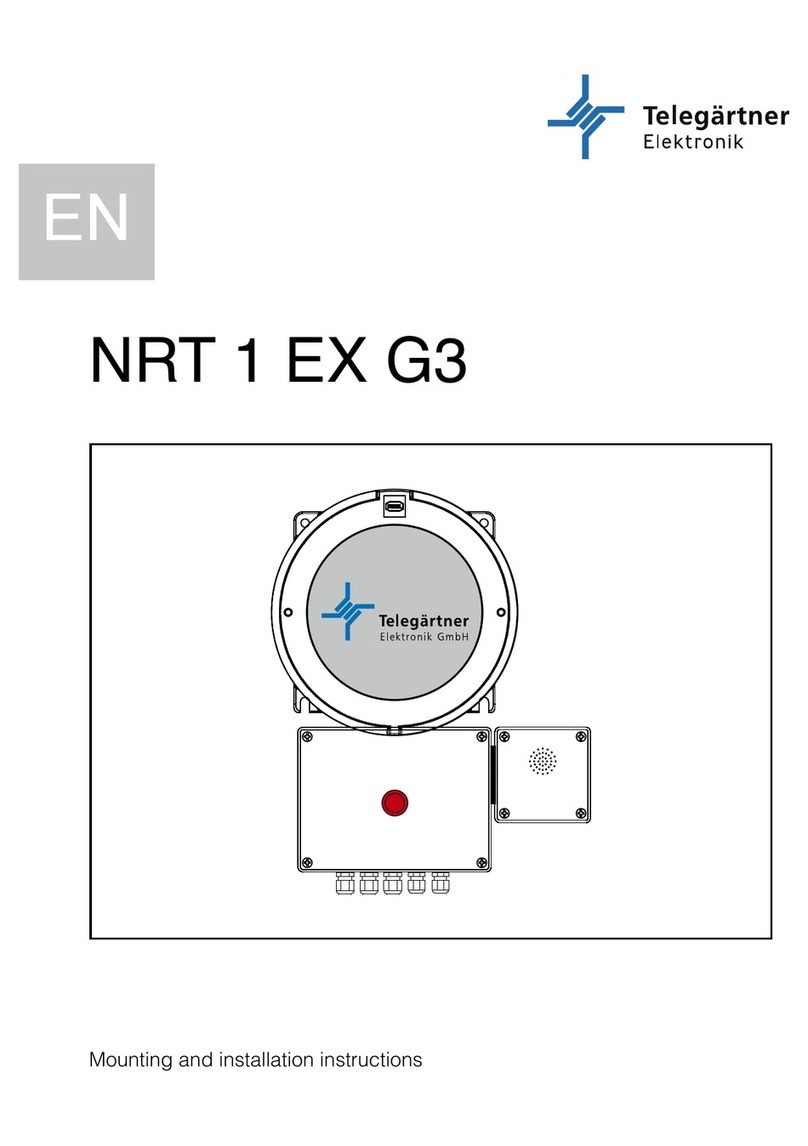
Telegärtner
Telegärtner NRT 1 EX G3 Mounting and installation instructions
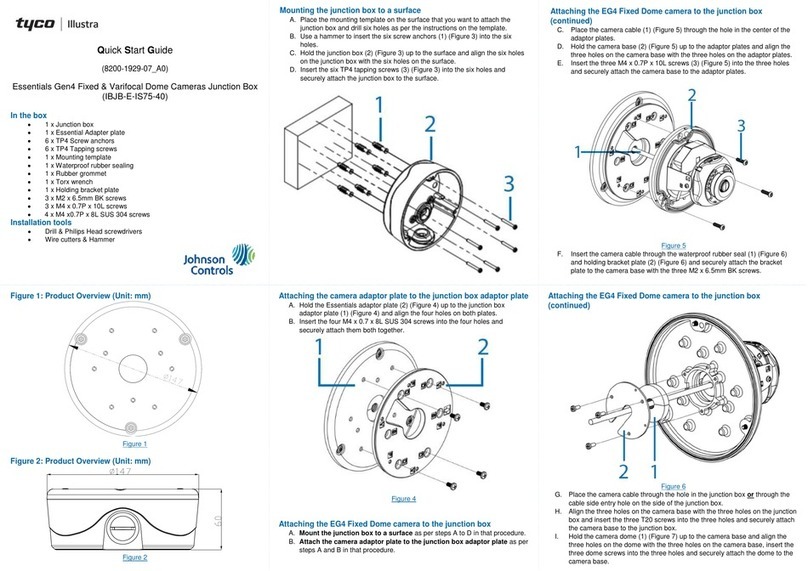
Johnson Controls
Johnson Controls tyco Illustra IBJB-E-IS75-40 quick start guide

Cleveland
Cleveland SGY-1000-D Operation manual
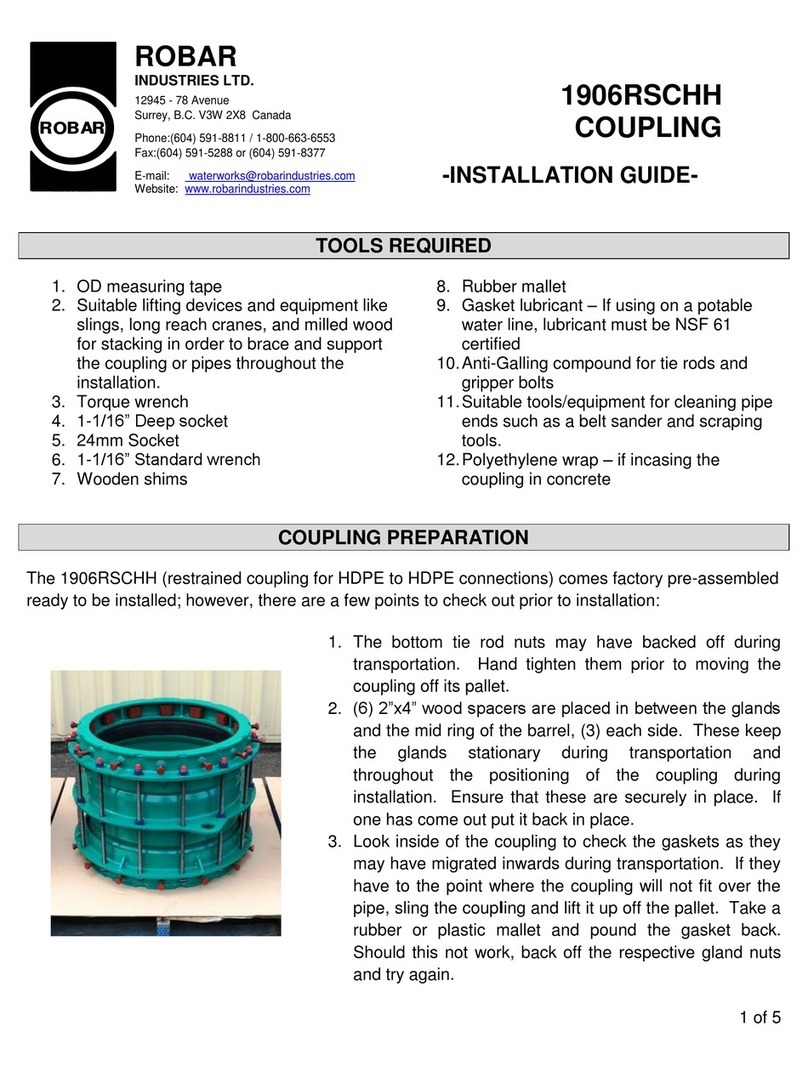
Robar Industries
Robar Industries 1906RSCHH installation guide

MCCOY
MCCOY KT5500 Technical manual
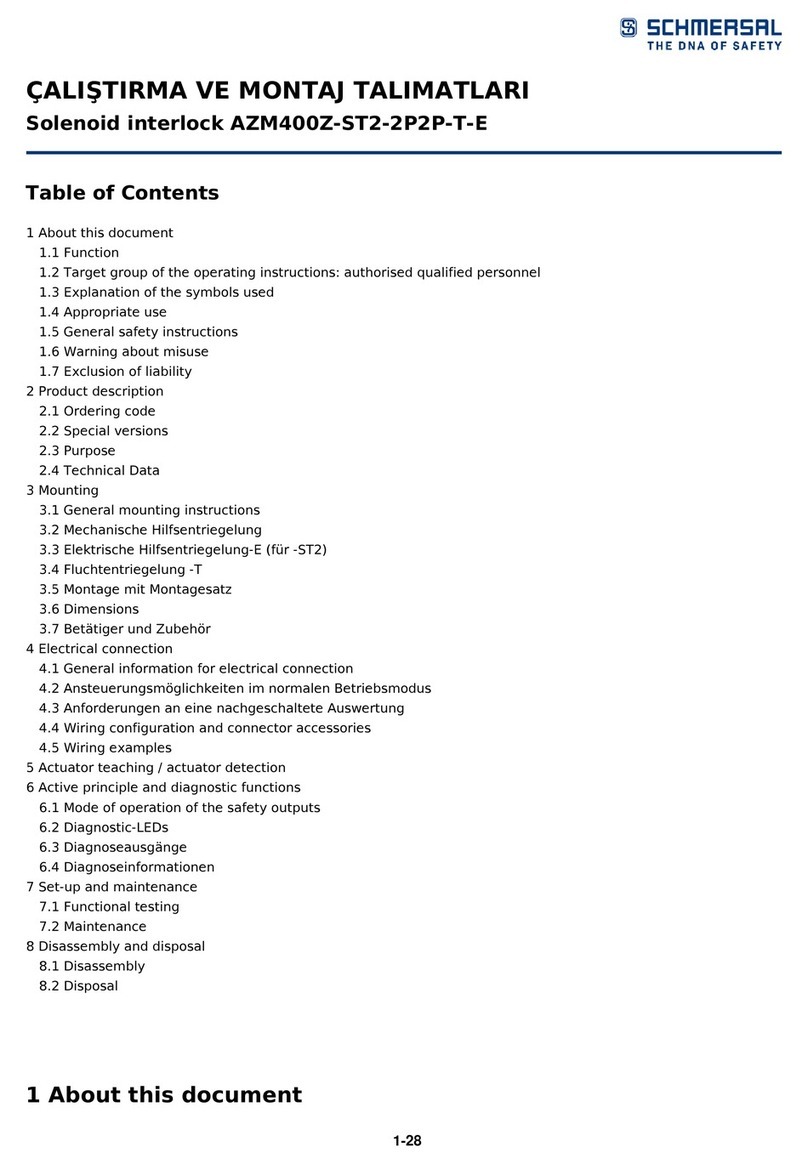
schmersal
schmersal AZM400Z-ST2-2P2P-T-E manual
